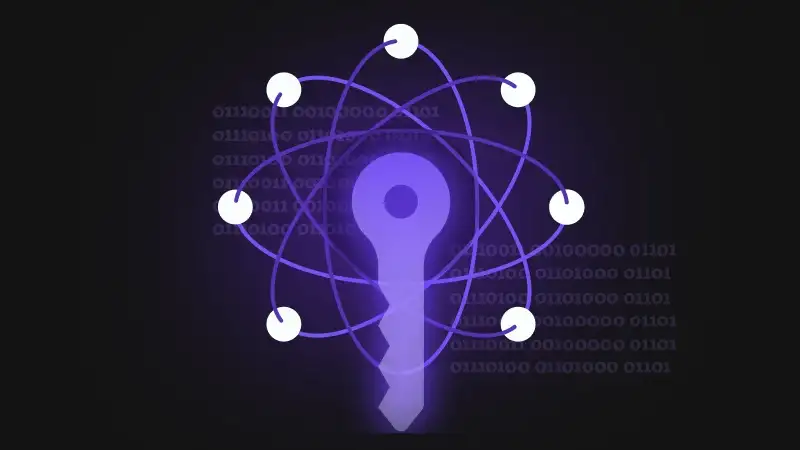There’s an arms race quietly unfolding that could redefine the future of digital security as we know it. Quantum key encryption and post-quantum security are moving from theoretical research to top-level conversations, demanding the attention of CISOs, architects, and security-minded developers.
In this article, we’ll dive into quantum key encryption and explore how organizations can build resilient post-quantum security strategies to stay ahead of the forthcoming cryptographic leap.
We’ll cover:
- What is quantum key encryption and why it matters
- The post-quantum threat landscape and timelines
- Preparing your cryptographic posture for post-quantum security
- Practical next steps for CISOs and enterprise security teams
For tech leaders and security professionals, the mandate is clear: understanding and planning for quantum disruption now is vital to protect your organization going forward.
What Is Quantum Key Encryption and Why It Matters
Quantum key encryption refers to leveraging quantum technologies or quantum-resistant algorithms to secure key exchanges and encrypted communications against the threats posed by quantum computers.
According to a recent report by IBM Research [source], quantum computing has made significant strides, with ongoing developments pushing the boundaries of qubit stability and error correction.
Quantum computers, once sufficiently advanced, could break widely used public-key cryptography algorithms like RSA and ECC, putting sensitive data at risk retroactively through what’s become known as the “harvest now, decrypt later” strategy.
While quantum key distribution (QKD) has appeared to be a promising long-term approach, many organizations are focusing on post-quantum cryptography (PQC) as a more immediate, scalable solution.
PQC uses algorithms that are designed to be secure against quantum attacks while still compatible with the infrastructure we all use today.
Understanding the Post-Quantum Threat Landscape
Not long ago, quantum computers seemed like something out of the latest science fiction novel, but that’s no longer the case. Advancements such as Google’s progress with the Willow chip show that businesses need to start taking the threat seriously and make it a priority in their security planning.
Key aspects of post-quantum threats include:
- Harvest now, decrypt later: As mentioned, adversaries can capture encrypted data now and decrypt it once quantum capabilities are mature. This means that data that’s safe today may very well be vulnerable down the road.
- Regulatory and compliance impacts: Industries such as financial services and healthcare will likely face updated guidelines around cryptographic agility and post-quantum readiness due to the highly sensitive nature of the data they work with.
- Long-lived data risks: Data with a confidentiality need of 10-20 years (customer PII, government data, etc.) will be particularly vulnerable.
All of this makes post-quantum security not just a theoretical exercise but a practical necessity to ensure the confidentiality and integrity of critical data throughout its lifecycle.
Building Cryptographic Agility for a Post-Quantum World
Post-quantum readiness may sound complex, but it doesn’t have to derail your current operations. The key is cryptographic agility, or the ability to swap out or upgrade cryptographic algorithms in your infrastructure as new standards emerge, all without requiring a disruptive overhaul.
Here’s what a practical approach can look like:
- Inventory your cryptographic assets: Identify where encryption is used across your environments, with a focus on TLS certificates, VPN tunnels, code signing, and data-at-rest encryption. This helps determine your potential exposure.
- Assess algorithm agility: Determine if your current systems allow algorithm flexibility. For example, can you upgrade to a new cipher suite or PQC algorithm without refactoring core business processes?
- Test NIST PQC candidates: Experiment with post-quantum algorithms like CRYSTALS-Kyber and CRYSTALS-Dilithium in non-live environments so you can get a better understanding of the impact on performance and integration.
- Monitor vendor post-quantum strategies: Stay in lock-step with your technology vendors to understand their timelines for post-quantum support—you don’t want your supply chain to become your weakest link.
The Big Question: How Do You Start Your Post-Quantum Journey?
Transitioning to post-quantum security doesn’t have to happen overnight. In fact, it can’t. It’s a commitment that will take time to fully implement, but beginning the process now will ensure your organization is prepared for the cryptographic leap when the time comes.
Here are five things you can do now to get started:
- Establish a cross-functional team to oversee your quantum readiness, ideally made up of security, compliance, and architecture stakeholders.
- Develop a quantum risk assessment to identify data and systems that need post-quantum protection based on their sensitivity and the duration of required confidentiality.
- Stay on top of regulatory and industry developments so your teams are well-educated on the changes to cryptographic standards and best practices.
- Start having serious vendor discussions regarding timelines and support for post-quantum algorithms across your environments.
- Educate teams across your organization about the reality of quantum threats, and use it as an opportunity to strengthen your overarching security culture.
These efforts are most effective if you organize your post-quantum planning in a way that aligns with the cybersecurity and compliance programs you already have in place. Treat it as another opportunity for digital modernization rather than an isolated security project.
Don’t Wait for Quantum to Break Your Security
Quantum computing is set to fundamentally change the world of encryption, but those who prepare now put themselves in a better position to handle the transition more seamlessly. Yes, there may be slight hiccups or disruptions, but it’s much better than the alternative—quantum key encryption and post-quantum security are not concepts to file away for the future. They’re urgent components of a modern enterprise data security strategy.
Ultimately, prioritizing cryptographic agility, assessing your current cryptographic inventory, and piloting post-quantum technologies gives your organization the best opportunity to protect sensitive data for years to come while maintaining compliance and operational continuity.
If you’re ready to future-proof your encryption, look no further than Fortanix. Fortanix data security platform can help your organization prepare for post-quantum security with true cryptographic agility and centralized control, allowing you to remain protected even as encryption standards evolve.
Contact us to request a demo and discover how we can support you on your path toward quantum resilience, without disrupting your current operations.











